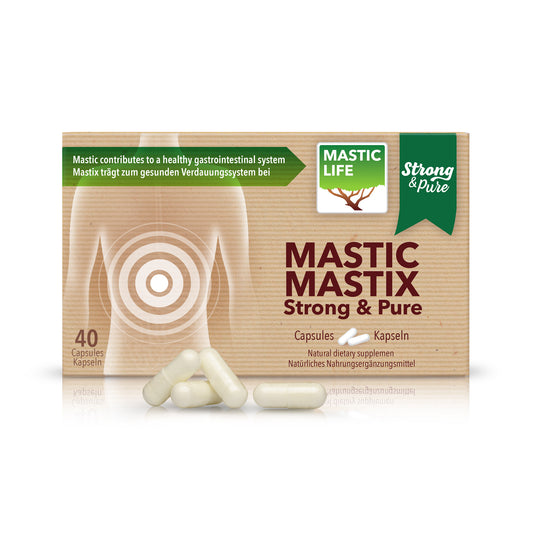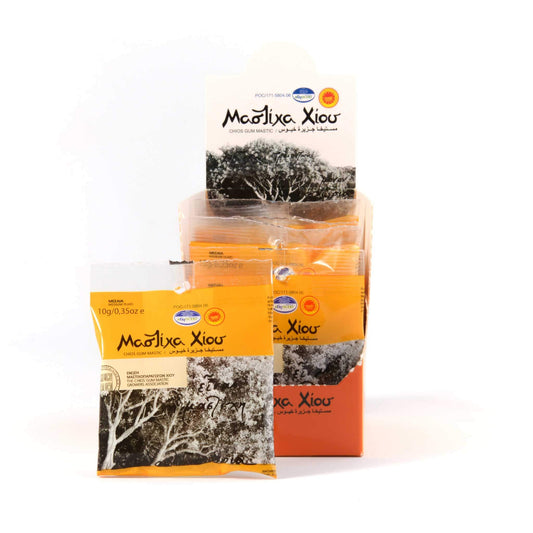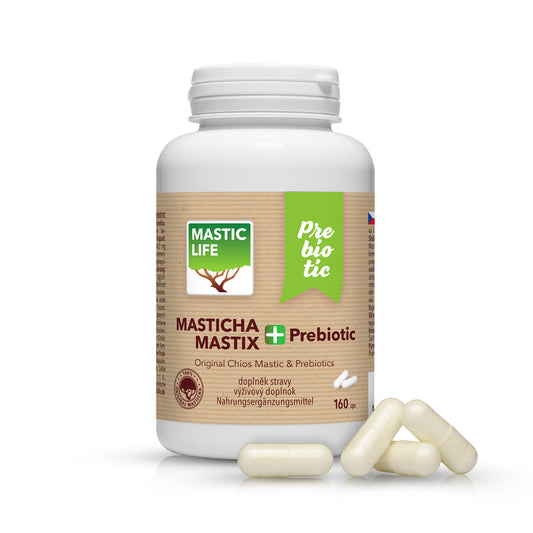Study: Effect of Mastic supplementation on NAFLD: The MAST4HEALTH Randomised, Controlled Trial
Nonalcoholic fatty liver disease (NAFLD) is the most common liver disease with poor therapeutic strategies. Mastic gum possesses antioxidant/anti-inflammatory and lipid-lowering properties. The authors investigate the effectiveness of Mastic as a nonpharmacological intervention in NAFLD.
Methods and Results
Ninety-eight patients with NAFLD in three countries (Greece, Italy, Serbia) are randomly allocated to either Mastic or Placebo for 6 months, as part of a multicenter, randomized, double-blind, placebo-controlled, parallel-group clinical trial. The authors assess NAFLD severity via magnetic resonance imaging (MRI) scanning and LiverMultiScan technique and evaluate the effectiveness of Mastic through medical, anthropometric, biochemical, metabolomic, and microbiota assessment.
Mastic is not superior to Placebo on changes in iron-corrected T1 (cT1) and Liver Inflammation Fibrosis score (LIF) in entire patient population; however, after BMI stratification (BMI ≤ 35 kg m-2 and BMI > 35 kg m-2), severely obese patients show an improvement in cT1 and LIF in Mastic versus Placebo. Mastic increases dissimilarity of gut microbiota, as shown by the Bray-Curtis index, downregulates Flavonifractor, a known inflammatory taxon and decreases Lysophosphatidylcholines-(LysoPC) 18:1, Lysophosphatidylethanolamines-(LysoPE) 18:1, and cholic acid compared to Placebo.
Conclusion
Mastic supplementation improves microbiota dysbiosis and lipid metabolite levels in patients with NAFLD, although it reduces parameters of liver inflammation/fibrosis only in severely obese patients.
You can find the whole study here.
Mastic for your gastrointestinal tract
-
Mastic Strong&Pure Economy Pack (240 Capsules) Masticlife
Regular price 32.600 FtRegular priceUnit price / per34.700 FtSale price 32.600 FtSale -
Mastic Strong&Pure (40 Capsules) Masticlife
Regular price 6.300 FtRegular priceUnit price / per -
Mastic Chios Raw Tears Medium Size 10 x 10 g
Regular price 14.000 FtRegular priceUnit price / per -
Mastic+ Prebiotic (160 Capsules) Masticlife
Regular price 17.100 FtRegular priceUnit price / per





